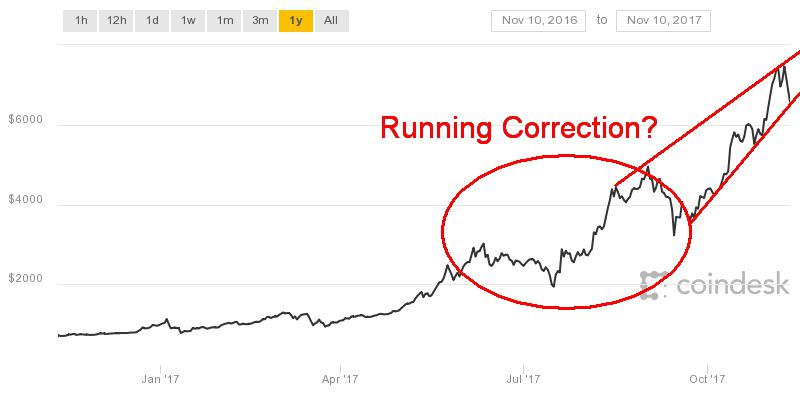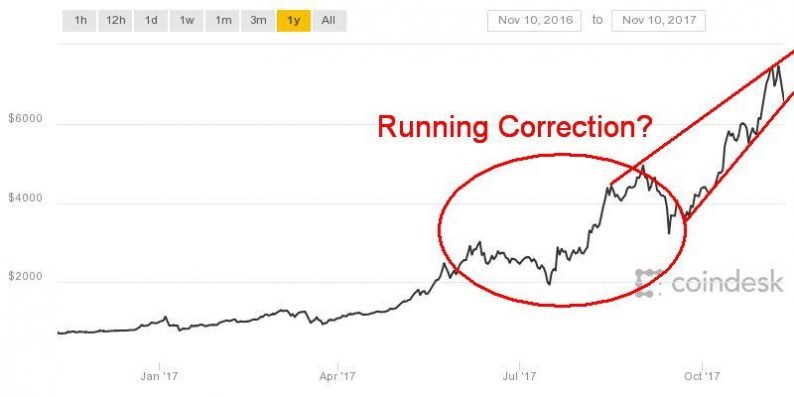November traditionally marks the start of the best six months of the year for stock markets. At least, that is what the record shows. The Dow Jones Industrials (DJI) has since 1950 had an average gain of 0.6% from May to October vs. an average gain of 7.5% from November to April. The period November to May has had over three times as many up periods as it has had down periods vs. the period from May to October which had only 1.5 times advantage in ups to down.
Of course, the strategy doesn’t work all of the time. Double-digit returns for the May/October period have occurred eight times since 1950. The most recent was the period just completed from May 1, 2017, to October 31, 2017, when the DJI jumped 11.6%. The best one was a 19.2% gain in 1958. In 2009, the May/October period gained 18.9%. But that was following one of the worst ever November/April periods that saw the DJI fall 12.4%. The November/April period has seen only three occurrences where it lost more than 10%. The most recent was the above-mentioned 2008 period where the DJI fell 12.4% while the other two occurred in 1969 and 1973. Interestingly enough, the first November/April period in 1969/1970 saw the Cambodian invasion while the 1973/1974 period was the OPEC oil embargo and the Watergate crisis.
Since we are just coming off a May/October period that saw double-digit returns it is interesting to look at what happened in the ensuing November/April period. As we noted there have been eight occurrences of double-digit returns for the May/October period. We summarize in the table below.
As can be seen from the table there were no occurrences of the DJI falling in the November/April period following double-digit gains in the May/October period. On five occurrences, the gains were also in double digits. On average, the November/April period saw gains of 14.6% following the May/October period that saw average gains of 14.5%. What all of that suggests is the coming six months could see double-digit gains once again for the DJI and the stock market as a whole.
Six-Month Switching Strategy
DJI% DJI%
|
Year |
May 1 – Oct 31 |
Nov 1 – Apr 30 |
|
1954 |
10.3% |
20.9% |
|
1958 |
19.2% |
14.8% |
|
1980 |
13.1% |
7.9% |
|
1982 |
16.9% |
23.6% |
|
1995 |
10.0% |
17.1% |
|
2003 |
15.6% |
4.3% |
|
2009 |
18.9% |
13.3% |
|
2017 |
11.6% |
Source: www.stocktradersalmanac.com
The question is, could double-digit gains actually happen in the coming November/April period? The answer is, yes, it could. A lot would have to break positively in the market for it to happen. It would be important for Trump tax cuts to make it through Congress and the Senate. So far, all major legislation has failed especially in the Senate (the most noticeable one was the failure to repeal Obamacare).
A proposed corporate tax plan from the Senate diverges from the Trump administration and Congress’s plan. Senators are seeking to delay the tax cuts. In December the debt ceiling comes up again and failure to set a new debt ceiling coupled with the tax plans and the budget could seriously derail the stock markets. It was on the assumption that all of that would get resolved that has helped spur the stock market higher over the past number of months. As well, the tax cut plan could result in $1.5 trillion in debt accumulation over the next decade. That might not sit well with many debt hawks on the Republican side.
Failure to achieve the tax cuts and extend the debt ceiling could set off a stock market panic. It is something to keep a close eye on.
This past week also saw some maneuvering in the Mid-East by Saudi Arabia. Not only did Crown Prince Mohammed bin Salman set off alarm bells with the arrest of upwards of 200 individuals accused of corruption totaling US$ 100 billion but Saudi Arabia is believed to be behind the removal of Lebanese Prime Minister Saad Hariri (he actually resigned because he feared for his life). The arrests in Saudi Arabia included royals, media moguls and even a billionaire business tycoon. The whereabouts of Saad Hariri are currently unknown.
This was followed up by Saudi Arabia warning its citizens to leave Lebanon. Why? Is there a planned invasion? It is well known the Saudi Arabia along with Israel—both U.S. client states—would like to see the end of Hezbollah in Lebanon. Saudi Arabia also accused Iran of igniting war when a missile was launched from Houthi held Yemen at Saudi Arabia. The Saudis back the Yemen government against Iranian backed Houthi rebels in Yemen. Bombings in Yemen by Saudi Arabia, backed by intelligence from the US, have killed thousands of Yemeni civilians and are creating a potential humanitarian crisis.
All this is disturbing as the Trump administration is egging on the Saudis and along with Israel, they would like to see an end to Hezbollah and Iran and the breakup of what they refer to as the Shia or Shiite Crescent. But a new front in the ongoing wars in the Mid-East may not sit well with global stock markets. Oil prices could soar and the proximity of Russian troops in Syria along with powerful Russian and Chinese interests in Iran and elsewhere could result in clashes that no one wants, igniting a much broader war. The stakes are quite high. An excellent analysis of the situation is in the Saturday, November 11, 2017 issue of The Globe and Mail: The new Saudi Crown Prince, the Iranian threat – and the drumbeats of war.
A potential clash over tax cuts and the debt ceiling and the potential threat of the expansion of war in the Mid-East could be two deadly companions that could rattle markets.
Bitcoin Watch!

Source: www.coindesk.com
In a space of 48 hours, Bitcoin fell roughly $1,300. It is not as if that was the first time as earlier when Bitcoin first approached $5,000 it also fell suddenly and sharply. Still, it is a reminder of the volatility that appears to be inherent in Bitcoin and cryptocurrencies. They are not for the faint of heart. This came after Bitcoin hit just shy of $8,000 (high was $7,879) after it was announced plans to split the Bitcoin into two were suspended. Then came the news that Bitcoin gold was to go live this weekend. What it is, is a fork of the Bitcoin Blockchain. Current holders of Bitcoin were to be “airdropped” (the term used) the new coins. The move has been heavily criticized. When Bitcoin cash was launched in August it quickly took off. Could the announcement of Bitcoin gold have had the opposite effect?
All of this has come against a backdrop of learning that “Buy Bitcoin” is googled more than “Buy gold.” After all, gold and Bitcoin share some of the same characteristics. Both are praised by those who believe that fiat currencies will eventually fail and that one needs to diversify out of them to protect oneself against the inevitable decline of paper currencies.
Let’s remember gold has been around as money for 3,000 years, whereas Bitcoin is relatively new, arriving on the scene only a few years ago. Yes, Bitcoin is up over 550% this year even after this week’s fall whereas gold is only up 12%. But gold is far more durable and can’t be hacked on a computer like Bitcoin and other cryptocurrencies can. Bitcoin has easier portability but gold’s supplies are limited; the number of cryptocurrencies could become endless and the ability to create more unlimited. That is not much different from fiat currencies. Bitcoin is quite volatile as the last couple of days attests whereas gold is quite staid by comparison. Gold is a real asset whereas Bitcoin is an electronic asset. And what if the grid went down?









Leave A Comment